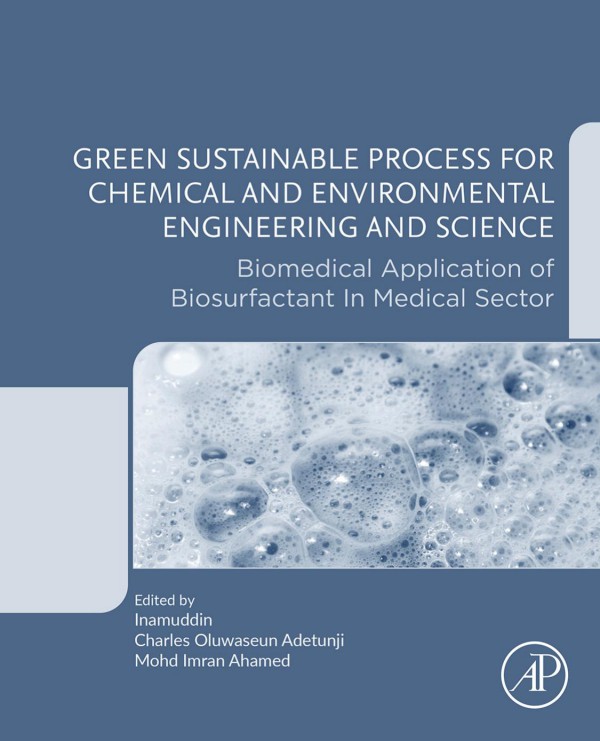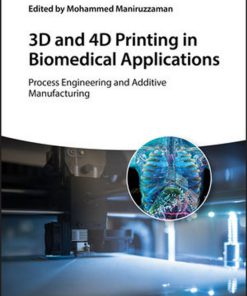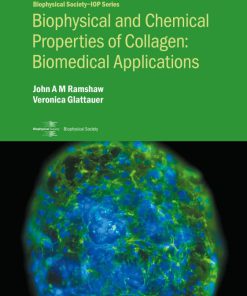(EBook PDF) Green Sustainable Process for Chemical and Environmental Engineering and Science 1st edition by Inamuddin, Adetunji Charles Oluwaseun, Ahamed Mohd Imran 0323984177 9780323984171 full chapters
$50.00 Original price was: $50.00.$25.00Current price is: $25.00.
Authors:Inamuddin;Adetunji, Charles Oluwaseun;Ahamed, Mohd Imran; , Series:Biomedical [99] , Tags:Green Sustainable Process for Chemical and Environmental Engineering and Science: Biomedical Application of Biosurfactant in Medical Sector; (2022) 709pp. 978-0-323-85146-6 , Author sort:Inamuddin;Adetunji, Charles Oluwaseun;Ahamed, Mohd Imran; , Ids:9780323851466 , Languages:Languages:eng , Published:Published:Mar 2022 , Publisher:Elsevier Inc. , Comments:Comments:Green Sustainable Process for Chemical and Environmental Engineering and Science: Biomedical Application of Biosurfactant in Medical Sector, (2022) 709pp. 978-0-323-85146-6
Green Sustainable Process for Chemical and Environmental Engineering and Science 1st edition by Inamuddin, Adetunji Charles Oluwaseun, Ahamed Mohd Imran – Ebook PDF Instant Download/DeliveryISBN: 0323984177, 9780323984171
Full download Green Sustainable Process for Chemical and Environmental Engineering and Science 1st edition after payment.

Product details:
ISBN-10 : 0323984177
ISBN-13 : 9780323984171
Author : Inamuddin, Adetunji Charles Oluwaseun, Ahamed Mohd Imran
Green Sustainable Process for Chemical and Environmental Engineering and Science: Biomedical Application of Biosurfactant in Medical Sector highlights the numerous applications of biosurfactants in the field of medicine, especially as a replacement to synthetic drugs which have developed several levels of resistance over the years. Special emphasis is laid on their application as non-pyrogenic and non-toxic immunological adjuvants and their inhibitory characteristics against H+, K+, -ATPase and defense against gastric ulcers, along with their practical application as anti-adhesive coating agents for medical insert materials. The book addresses issues by combining knowledge of their production with information on a range of medical applications.
Green Sustainable Process for Chemical and Environmental Engineering and Science 1st Table of contents:
Chapter 1. Application of low molecular weight and high molecular weight biosurfactant in medicine/biomedical/pharmaceutical industries
Abstract
1.1 Introduction
1.2 High molecular weight biosurfactant
1.3 Low molecular weight biosurfactant
1.4 Conclusions
References
Chapter 2. Application of biosurfactant as an adjuvant in medicine
Abstract
2.1 Introduction
2.2 Biosurfactant types and structure–activity relationship
2.3 Lipopeptides
2.4 Surfactin and surfactin derived
2.5 Nucleolipids
2.6 Glycolipids
2.7 Full peptides
2.8 Medicinal properties of biosurfactants
2.9 Biosurfactants as antitumor agents
2.10 Biosurfactants as antiviral agents
2.11 Biosurfactants as antibacterial agents
2.12 Biosurfactants as drug-delivery agents
2.13 Biosurfactants as antiadhesive agents
2.14 Biosurfactants as antimicrobial agents
2.15 Biosurfactants: mechanism of interaction
2.16 Conclusion
References
Chapter 3. Applications of biosurfactants in dentistry
Abstract
3.1 Introduction
3.2 Oral biofilm
3.3 Biosurfactants versus synthetic surfactants
3.4 Therapeutic properties of biosurfactants in biomedical field
3.5 Biosurfactants from lactic acid bacteria strains
3.6 Other sources of biosurfactants
3.7 Applications of biosurfactants in oral health
3.8 Biosurfactants and future goals
3.9 Conclusion
References
Chapter 4. Expansion of targeted drug-delivery systems using microbially sources biosurfactant
Abstract
4.1 Introduction
4.2 Microbial biosurfactants
4.3 Microbial biosurfactants as drug-delivery systems
4.4 Types of biosurfactant-based drug-delivery system
4.5 Conclusions and future challenges
Acknowledgments
References
Chapter 5. Inhibition of fibrin clot formation
Abstract
5.1 Introduction
5.2 Coagulation factors and fibrin clot formation
5.3 Consequences of fibrin clot formation
5.4 Inhibition of fibrin clot formation
5.5 Biosurfactants as drug
5.6 Conclusion
References
Chapter 6. Application of biosurfactant for the management of tropical and life-threatening diseases
Abstract
6.1 Introduction
6.2 Framework of the research study
6.3 Tropical and life-threatening diseases
6.4 Application of the biosurfactants against tropical and life-threatening diseases
6.5 Conclusion
Acknowledgments
Conflict of interest
References
Chapter 7. Application of biosurfactant for the management of Plasmodium parasites
Abstract
7.1 Introduction
7.2 Environmental application of biosurfactant for the management of different types of mosquitoes
7.3 Biology of Plasmodium species
7.4 Conclusion and future recommendation
References
Chapter 8. Role of biosurfactant in the destruction of pores and destabilization of the biological membrane of pathogenic microorganisms
Abstract
8.1 Introduction
8.2 Modes of action involved in the biological activity of biosurfactants as antipathogen agent
8.3 Modes of action involved in the biological activity of biosurfactants as larvicidal agents agent
8.4 The mechanism involved in the biological control of pathogenic microorganisms
8.5 Modes of action involved in the application of biosurfactant as an antibacterial agent
8.6 Modes of action involved in the application of biosurfactant as antiyeast and antifungal (pathogenic microorganism of medical relevance)
8.7 Treatment of the parasite using in vivo and in vitro treatments of malaria parasites
8.8 Modes of action involved in the application of biosurfactant for the management of the vector and the parasites
8.9 Conclusion and future recommendation
References
Further reading
Chapter 9. Antibacterial and antifungal activities of lipopeptides
Abstract
9.1 Introduction
9.2 Specific examples of antifungal and antibacterial properties of iturins
9.3 Specific examples of lipopeptides as antibacterial and antifungal agents
9.4 The antiparasitic and antitumor activities of surfactin
9.5 Synthesis, extraction, and purification of biosurfactant
9.6 Physicochemical separation parameters of biosurfactants
9.7 Direct liquid partitioning from cell culture
9.8 Separation by precipitation
9.9 Solvent extraction
9.10 Ammonium sulfate precipitation method
9.11 Zinc sulfate precipitation method
9.12 Acid precipitation method
9.13 Studies on extraction and purification of biosurfactants
9.14 Characterization of biosurfactant
9.15 Fourier transform infrared features of glycolipids
9.16 Fengycin
9.17 Isolation and purification of lipopeptides
9.18 Conclusion and future recommendation
References
Chapter 10. The role of biosurfactants in the advancement of veterinary medicine
Abstract
10.1 Introduction
10.2 Properties of biosurfactants
10.3 Types of biosurfactants
10.4 Toxicity of biosurfactant
10.5 Potential application of biosurfactants in veterinary field
10.6 Future prospects and conclusion
Acknowledgment
Conflicts of interest
References
Chapter 11. Applications of surfactin and other biosurfactants in anticancer activity
Abstract
11.1 Introduction
11.2 Characteristics and mechanism of action of biosurfactants
11.3 Applications of biosurfactants in anticancer activity
11.4 Applications of surfactin in anticancer activity
11.5 Applications of other biosurfactants in cancer therapy
11.6 Conclusion
References
Chapter 12. Inhibitory activity of biosurfactants against H+-K+ ATPases and defense against gastric ulcers
Abstract
12.1 Introduction
12.2 Biosurfactants: potential application as a therapeutic target
12.3 Function of H+/K+-ATPase in gastric ulcer formation
12.4 Efficiency of proton pump inhibitors to treat gastric ulcers
12.5 Pumilacidin: its role in the control of gastric ulcer
12.6 Conclusion
References
Chapter 13. Applications of biosurfactants as nonpyrogenic and nontoxic immunologic adjuvants
Abstract
13.1 Introduction
13.2 Biological and therapeutic role of biosurfactants
13.3 Immunomodulatory role of biosurfactants
13.4 Biosurfactants and immunologic adjuvants
13.5 Applications of biosurfactants as immunologic adjuvants
13.6 General mechanism of immunologic adjuvant activity
References
Chapter 14. Antifungal activity of biosurfactant against profound mycosis
Abstract
14.1 Introduction
14.2 Production of biosurfactants
14.3 Properties characterization of the biosurfactants
14.4 Etiological agents of profound mycoses and application of biosurfactants against them
14.5 Final considerations
References
Chapter 15. Hemolysis and formation of ion channels in lipid membrane
Abstract
15.1 Introduction
15.2 Role of biosurfactants
15.3 Classification of surfactants
15.4 Mechanism of hemolysis caused by surfactants
15.5 Role of lipid layer in pore formation and membrane lysis
15.6 Mechanism of pore formation and membrane lysis
15.7 Applications of biosurfactants
15.8 Structural aspects of biosurfactants playing role in hemolysis and membrane lysis
15.9 Factors influencing pore formation
15.10 Research work on the role of surfactants in hemolysis
15.11 Research on the role of biosurfactants in pore formation and membrane lysis
15.12 Conclusion
References
Chapter 16. Biosurfactant as a vehicle for targeted antitumor and anticancer drug delivery
Abstract
16.1 Introduction
16.2 Properties of biosurfactant
16.3 Antitumor and anticancer properties of biosurfactants
16.4 Biosurfactants as drug carriers
16.5 Conclusion and future outlook
References
Further reading
Chapter 17. Biosurfactants in the pharmaceuticalsciences
Abstract
17.1 Introduction
17.2 Main uses of surfactants in the pharmaceutical industry
17.3 Biosurfactants
17.4 Reports of biosurfactants employed in the pharmaceutical sector
17.5 Final considerations
References
Chapter 18. Naturally occurring bioactive biosurfactants
Abstract
18.1 Introduction
18.2 Bioactivity of naturally occurring biosurfactants
18.3 Conclusions
Acknowledgement
References
Chapter 19. Application of biosurfactants in the treatment of Mycobacterium tuberculosis infection
Abstract
19.1 Introduction
19.2 Biosurfactants
19.3 Biosurfactant synthesis
19.4 Properties of biosurfactants
19.5 Mycobacterium tuberculosis
19.6 Molecular mechanism of Mycobacterium tuberculosis
19.7 Therapeutics of Mycobacterium tuberculosis
19.8 Future prospective
References
Chapter 20. Biosurfactants role in nanotechnology for anticancer treatment
Abstract
20.1 Introduction
20.2 Types of biosurfactants
20.3 Biosurfactants as surface modifiers
20.4 Role of biosurfactants in cancer therapy
20.5 Future perspective
References
Chapter 21. Application of low- and high-molecular-weight biosurfactants in medicine/biomedical/pharmaceutical industries
Abstract
21.1 Introduction
21.2 Classification of biosurfactants
21.3 Applications of biosurfactant
21.4 Conclusion
References
Chapter 22. Biosurfactants for pharmacological interventions in cancer therapy
Abstract
22.1 Introduction
22.2 Types and sources of biosurfactants
22.3 Raw materials used for biosurfactant production
22.4 Biosurfactant with potent anticancer activity against different cancers with mechanism
22.5 Biosurfactant-nanoconjugates for cancer treatment
22.6 Biosurfactant-nanoconjugates in diagnosis
22.7 Biosurfactant-nanoconjugates in treatment
22.8 Conclusion and future perspectives
Acknowledgment
References
Chapter 23. Biosurfactants in respiratory viruses and the Coronavirus disease 2019 pandemic
Abstract
23.1 Introduction
23.2 A quick overview of biosurfactants
23.3 Viruses and biosurfactants
23.4 Conclusion
Acknowledgement
References
Chapter 24. Biosurfactant as an intervention for medical device associated infections
Abstract
24.1 Introduction
24.2 Nosocomial device-associated infections
24.3 Role of biofilms on device-associated infections
24.4 Role of biosurfactants in biofilm mode of growth
24.5 Application of biosurfactant specific to device-associated infections
24.6 Conclusion
Acknowledgment
References
Chapter 25. Biosurfactants for industrial applications
Abstract
25.1 Introduction
25.2 Materials and methods for biosurfactants
25.3 Industrial applications of biosurfactant in biomedical area
25.4 Conclusion and future perspectives
References
Chapter 26. Antitumor and anticancer activity of biosurfactant
Abstract
26.1 Introduction
26.2 Anticancer and antitumor activity of biosurfactants
26.3 Other biomedical applications
26.4 Conclusion
References
Chapter 27. Biosurfactant as antibiofilm agent
Abstract
27.1 Introduction
27.2 What is biofilm?
27.3 Biosurfactants
27.4 Biosurfactants as antibiofilm agent
27.5 Conclusion
References
Chapter 28. Rheological behavior of biosurfactants
Abstract
28.1 Introduction
28.2 Brief introduction on biosurfactants
28.3 Rheological properties of some biosurfactants and their systems
28.4 Conclusions
References
Chapter 29. Biosurfactants for optimal delivery of poorly soluble therapeutic agents
Abstract
29.1 Introduction
29.2 Biosurfactants: important component in pharmaceutical products
29.3 Potential advantages of biosurfactants
29.4 Classification of biosurfactants
29.5 Biosurfactants for delivery of poorly soluble drugs
29.6 Concluding remarks
References
Chapter 30. Role of surfactants in pulmonary drug delivery
Abstract
30.1 Introduction
30.2 Pulmonary diseases management: therapies and interventions
30.3 Surfactants: properties and applications
30.4 Biosurfactants: source, properties, and purpose
30.5 Applications of biosurfactants in pulmonary diseases
30.6 Clinical trial perspective
30.7 Conclusion
References
Chapter 31. Antioxidant activity of biogenic surfactants
Abstract
31.1 Biosurfactants
31.2 Properties of biosurfactants
31.3 Classification and chemical nature of biosurfactants
31.4 Biosurfactant production
31.5 Characterization of biosurfactants
31.6 Applications of biosurfactants
31.7 Antioxidants
31.8 Methods for evaluation of antioxidant activity
31.9 Biosurfactants and their antioxidant property
31.10 Conclusion
References
Chapter 32. Recent advances in biosurfactant as antiadhesion/antibiofilm agents
Abstract
32.1 Introduction
32.2 Microbial biofilm formation
32.3 Biosurfactant as antiadhesive agent
32.4 Biosurfactant as antibiofilm agent
32.5 Conclusion and future prospects
References
Chapter 33. Current trends in the application of biosurfactant in the synthesis of nanobiosurfactant such as engineered biomolecules from various biosurfactant derived from diverse sources, nanoparticles, and nanorobots
Abstract
33.1 Introduction
33.2 Microbial synthesis of biosurfactants
33.3 Conclusion
References
Chapter 34. Application of biosurfactants in the food industry: supply chain and green economy perspectives
Abstract
34.1 Introduction
34.2 Methodology
34.3 Biosurfactant production from food and agro-waste
34.4 Potential food applications of biosurfactants
34.5 Discussion and analysis
34.6 Conclusion
Acknowledgment
References
Chapter 35. Understanding mechanisms underlying genes regulating the production of biosurfactant
Abstract
35.1 Introduction
35.2 Mechanism of working of biosurfactants
35.3 Enhancing the surface area of water-insoluble hydrophobic substances
35.4 Increasing biological availability of water-insoluble substances
35.5 Molecular genetic mechanisms of microbial synthesis of biosurfactants
35.6 Gene regulation in fungal biosurfactants
35.7 Molecular engineering facets for novel and customized biosurfactants
35.8 Commercial applications of biosurfactants
35.9 Toxicological and ecological aspects of biosurfactants
35.10 Bioremediation using biosurfactants
35.11 Conclusion
35.12 Acknowledgments
35.13 Conflict of interest
People also search for Green Sustainable Process for Chemical and Environmental Engineering and Science 1st:
green chemistry processes
sustainable chemical process
green chemical principles
chemical processes for a sustainable future
chemical sustainability












